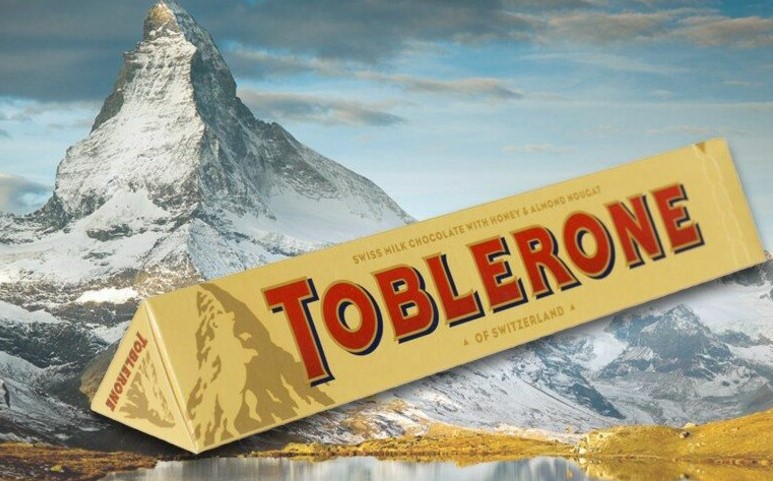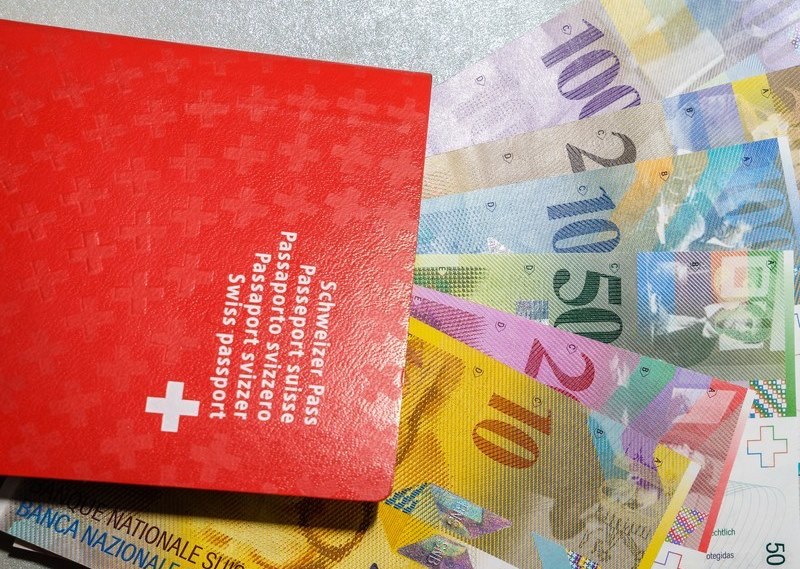More than once South Bohemia has played a decisive role in history.Today, none of the other Czech territories would present a traveler with so many historical monuments. 
Ponds and lakes, chains of boundary mountains and holts, ancient cities, fortresses and castles, national monuments of architecture, brewing traditions – all of the listed you will find in South Bohemia. More than once this land has played a decisive role not only in the history of the country but also the whole of Europe. The rivalry of Czech kings with powerful noble dynasties gave an impulse to the construction of a thick network of fortresses and castles.
Europe-shaking Hussite wars in the XV century, the fight for Catholic Church reformation originated exactly in South Bohemia, associated with John Huss and John Zizka. Among the prominent men born in this territory, it is possible to name the writer Karl Klostermann, poet Adalbert Shtifter, electrical engineer Frantisek Krizik and many others.
South Bohemia did its bit towards the forming of the Czech and European cultural heritage. Witnesses to bygone days – Roman and Gothic monuments.
Magnificent architectural masterpieces of the Renaissance, related to the Rozmberks' blossom. There are not only separate castles and farmsteads but also whole city complexes. The Medieval city Cesky Krumlov and the village of Holasovice, typical examples of the so called “rural baroque” architecture, are included in the UNESCO World Heritage List. It is literally possible to say that the nature of the land is as if created for rest. The rivers of South Bohemia are the Vltava, Luznice, Otava, Nezarka and Volynka, and the Lipno reservoir, Orlik Dam attract watermen. There are European and worldwide tournaments organized on the local water reservoirs (for example, regattas on the Lipno reservoir).
The mountain district Sumava, as it is often referred to – “Europe’s lungs”, is famous for its virgin nature, peat bogs, glacial lakes.
This land offers the possibility for fishing, hunting, golfing, riding, etc. Resorts in the comfortable ancient villages Trebon, Bechyne, Vraz-u-Piseka offer remedial and recreational treatments, including curative mud-baths. There in the territory of South Bohemia unique monuments of industrial activity survived: the Schwarzenberk floating channel dug 200 years ago for transporting wood, connecting the Vltava and Danube river basins, fragments of the horse-drawn railway from Linz in Ceske Budejovice, the narrow-gauge railway Jindrichuv Hradec – Nova Bystrice. The city Ceske Budejovice built in 1265 at the confluence of the rivers Vltava and Malse on the command of King Premysl Otakar II, has retained the ancient spirit of a historical centre. It is not only the capital of South Bohemia but also the city of beer: the famous Czech “Budvar” is prepared exactly here. The first horsedrawn railway in Europe had connected Ceske Budejovice with Austrian Linz in 1832.
Probably, none of the other Czech territories would present a traveller so many historical monuments. Monumental romantic Hluboka nad Vltavou Castle, erected in the Windsor gothic architecture style is well known far outside the country. Numerous ponds, created in XIV – XVI centuries, have spread round the small town Trebon. It is the place from where the famous Christmas carps are spread around the country on Christmas.
On a rocky island in the middle of a little lake the fairy-tale castle Cervena Lhota, surrounded by the dense forests of so-the called Czech Canada lies. It is a place where knights of the road were hid in days long gone, but now established as a natural park. There is the unique “landed stone”, marking the place of Bohemia, Moravia and Lower Austria borders connection near the grandiose ruins of one of the largest medieval fortresses – Landstein. Already for more than one hundred years the narrow-gauge railway’s route Jindrichuv Hradec – Nova Bystrice goes through the local forests.
City Pisek, where once golden sand was washed, is famous for the eldest in Bohemia stone bridge (XIII cent.). Milevsko can be proud of its tremendous Roman Catholic Church, included in the complex of monastery belonging to the Premonstrates Order. Castle Orlik that before erection of the Orlik Dam was situated high above the Vltava river-valley, today is mirrored in the clear water of the Dam. In the framework of restitution the castle was returned to the ancient noble Schwarzenberk family. Nowadays one of this family representatives, Karl Schwarzenberk, is Minister of Foreign Affairs in the Czech government.
Another “King of Bohemia Castles” – Zvikov, once belonging to the Czech monarchs, towers above the confluence of the Otava and Vltava rivers.
It is possible to compare the course of the Vltava under Lipno reservoir with the ribbon on which some giant threaded pearls. The first of them is a Cistercian monastery Vyssi Brod relates to the largest Czech church complexes. The next pearl is one of the most ancient fortresses in the country – Rozmberk, built by the bellicose noble family - Vitkovits in the first half of the XIII century. But the brightest in this necklace is Cesky Krumlov. It has managed to preserve its ancient spirit even nowadays – the narrow winding streets, ancient house fronts, decorated with fretwork, sgraffito, coats of arms and Saints blackened due to their age.
Towering above the city castle as though growing from a rock above the river Vltava and wraps-round the central quarters of the city. This castle occupies the second by size place in the Czech Republic: its area is only less by 4 m2 that of Prazsky Hrad. The magic of this surprising city is closely bounded with its history: the great number of alchemists and astrologers who lived here at the end of the XVI century, in the days of king Rudolf II. The ghost of the White Lady, a girl who was killed by a reckless royal son, walks along the corridors of the castle even today.
It is possible to talk about South Bohemia infinitely. In this magic land, being mislaid in the centre of Europe, the unique aroma of antiquity soars yet, the walls of knight's castles overgrow with ivy, the windings streets of ancient cities twine, the virgin forests rustle...
Katerina Aizpurvit












 Ponds and lakes, chains of boundary mountains and holts, ancient cities, fortresses and castles, national monuments of architecture, brewing traditions – all of the listed you will find in South Bohemia. More than once this land has played a decisive role not only in the history of the country but also the whole of Europe. The rivalry of Czech kings with powerful noble dynasties gave an impulse to the construction of a thick network of fortresses and castles.Europe-shaking Hussite wars in the XV century, the fight for Catholic Church reformation originated exactly in South Bohemia, associated with John Huss and John Zizka. Among the prominent men born in this territory, it is possible to name the writer Karl Klostermann, poet Adalbert Shtifter, electrical engineer Frantisek Krizik and many others.South Bohemia did its bit towards the forming of the Czech and European cultural heritage. Witnesses to bygone days – Roman and Gothic monuments.Magnificent architectural masterpieces of the Renaissance, related to the Rozmberks' blossom. There are not only separate castles and farmsteads but also whole city complexes. The Medieval city Cesky Krumlov and the village of Holasovice, typical examples of the so called “rural baroque” architecture, are included in the UNESCO World Heritage List. It is literally possible to say that the nature of the land is as if created for rest. The rivers of South Bohemia are the Vltava, Luznice, Otava, Nezarka and Volynka, and the Lipno reservoir, Orlik Dam attract watermen. There are European and worldwide tournaments organized on the local water reservoirs (for example, regattas on the Lipno reservoir).The mountain district Sumava, as it is often referred to – “Europe’s lungs”, is famous for its virgin nature, peat bogs, glacial lakes.This land offers the possibility for fishing, hunting, golfing, riding, etc. Resorts in the comfortable ancient villages Trebon, Bechyne, Vraz-u-Piseka offer remedial and recreational treatments, including curative mud-baths. There in the territory of South Bohemia unique monuments of industrial activity survived: the Schwarzenberk floating channel dug 200 years ago for transporting wood, connecting the Vltava and Danube river basins, fragments of the horse-drawn railway from Linz in Ceske Budejovice, the narrow-gauge railway Jindrichuv Hradec – Nova Bystrice. The city Ceske Budejovice built in 1265 at the confluence of the rivers Vltava and Malse on the command of King Premysl Otakar II, has retained the ancient spirit of a historical centre. It is not only the capital of South Bohemia but also the city of beer: the famous Czech “Budvar” is prepared exactly here. The first horsedrawn railway in Europe had connected Ceske Budejovice with Austrian Linz in 1832.Probably, none of the other Czech territories would present a traveller so many historical monuments. Monumental romantic Hluboka nad Vltavou Castle, erected in the Windsor gothic architecture style is well known far outside the country. Numerous ponds, created in XIV – XVI centuries, have spread round the small town Trebon. It is the place from where the famous Christmas carps are spread around the country on Christmas.On a rocky island in the middle of a little lake the fairy-tale castle Cervena Lhota, surrounded by the dense forests of so-the called Czech Canada lies. It is a place where knights of the road were hid in days long gone, but now established as a natural park. There is the unique “landed stone”, marking the place of Bohemia, Moravia and Lower Austria borders connection near the grandiose ruins of one of the largest medieval fortresses – Landstein. Already for more than one hundred years the narrow-gauge railway’s route Jindrichuv Hradec – Nova Bystrice goes through the local forests.City Pisek, where once golden sand was washed, is famous for the eldest in Bohemia stone bridge (XIII cent.). Milevsko can be proud of its tremendous Roman Catholic Church, included in the complex of monastery belonging to the Premonstrates Order. Castle Orlik that before erection of the Orlik Dam was situated high above the Vltava river-valley, today is mirrored in the clear water of the Dam. In the framework of restitution the castle was returned to the ancient noble Schwarzenberk family. Nowadays one of this family representatives, Karl Schwarzenberk, is Minister of Foreign Affairs in the Czech government.Another “King of Bohemia Castles” – Zvikov, once belonging to the Czech monarchs, towers above the confluence of the Otava and Vltava rivers.It is possible to compare the course of the Vltava under Lipno reservoir with the ribbon on which some giant threaded pearls. The first of them is a Cistercian monastery Vyssi Brod relates to the largest Czech church complexes. The next pearl is one of the most ancient fortresses in the country – Rozmberk, built by the bellicose noble family - Vitkovits in the first half of the XIII century. But the brightest in this necklace is Cesky Krumlov. It has managed to preserve its ancient spirit even nowadays – the narrow winding streets, ancient house fronts, decorated with fretwork, sgraffito, coats of arms and Saints blackened due to their age.Towering above the city castle as though growing from a rock above the river Vltava and wraps-round the central quarters of the city. This castle occupies the second by size place in the Czech Republic: its area is only less by 4 m2 that of Prazsky Hrad. The magic of this surprising city is closely bounded with its history: the great number of alchemists and astrologers who lived here at the end of the XVI century, in the days of king Rudolf II. The ghost of the White Lady, a girl who was killed by a reckless royal son, walks along the corridors of the castle even today.It is possible to talk about South Bohemia infinitely. In this magic land, being mislaid in the centre of Europe, the unique aroma of antiquity soars yet, the walls of knight's castles overgrow with ivy, the windings streets of ancient cities twine, the virgin forests rustle...Katerina Aizpurvit
Ponds and lakes, chains of boundary mountains and holts, ancient cities, fortresses and castles, national monuments of architecture, brewing traditions – all of the listed you will find in South Bohemia. More than once this land has played a decisive role not only in the history of the country but also the whole of Europe. The rivalry of Czech kings with powerful noble dynasties gave an impulse to the construction of a thick network of fortresses and castles.Europe-shaking Hussite wars in the XV century, the fight for Catholic Church reformation originated exactly in South Bohemia, associated with John Huss and John Zizka. Among the prominent men born in this territory, it is possible to name the writer Karl Klostermann, poet Adalbert Shtifter, electrical engineer Frantisek Krizik and many others.South Bohemia did its bit towards the forming of the Czech and European cultural heritage. Witnesses to bygone days – Roman and Gothic monuments.Magnificent architectural masterpieces of the Renaissance, related to the Rozmberks' blossom. There are not only separate castles and farmsteads but also whole city complexes. The Medieval city Cesky Krumlov and the village of Holasovice, typical examples of the so called “rural baroque” architecture, are included in the UNESCO World Heritage List. It is literally possible to say that the nature of the land is as if created for rest. The rivers of South Bohemia are the Vltava, Luznice, Otava, Nezarka and Volynka, and the Lipno reservoir, Orlik Dam attract watermen. There are European and worldwide tournaments organized on the local water reservoirs (for example, regattas on the Lipno reservoir).The mountain district Sumava, as it is often referred to – “Europe’s lungs”, is famous for its virgin nature, peat bogs, glacial lakes.This land offers the possibility for fishing, hunting, golfing, riding, etc. Resorts in the comfortable ancient villages Trebon, Bechyne, Vraz-u-Piseka offer remedial and recreational treatments, including curative mud-baths. There in the territory of South Bohemia unique monuments of industrial activity survived: the Schwarzenberk floating channel dug 200 years ago for transporting wood, connecting the Vltava and Danube river basins, fragments of the horse-drawn railway from Linz in Ceske Budejovice, the narrow-gauge railway Jindrichuv Hradec – Nova Bystrice. The city Ceske Budejovice built in 1265 at the confluence of the rivers Vltava and Malse on the command of King Premysl Otakar II, has retained the ancient spirit of a historical centre. It is not only the capital of South Bohemia but also the city of beer: the famous Czech “Budvar” is prepared exactly here. The first horsedrawn railway in Europe had connected Ceske Budejovice with Austrian Linz in 1832.Probably, none of the other Czech territories would present a traveller so many historical monuments. Monumental romantic Hluboka nad Vltavou Castle, erected in the Windsor gothic architecture style is well known far outside the country. Numerous ponds, created in XIV – XVI centuries, have spread round the small town Trebon. It is the place from where the famous Christmas carps are spread around the country on Christmas.On a rocky island in the middle of a little lake the fairy-tale castle Cervena Lhota, surrounded by the dense forests of so-the called Czech Canada lies. It is a place where knights of the road were hid in days long gone, but now established as a natural park. There is the unique “landed stone”, marking the place of Bohemia, Moravia and Lower Austria borders connection near the grandiose ruins of one of the largest medieval fortresses – Landstein. Already for more than one hundred years the narrow-gauge railway’s route Jindrichuv Hradec – Nova Bystrice goes through the local forests.City Pisek, where once golden sand was washed, is famous for the eldest in Bohemia stone bridge (XIII cent.). Milevsko can be proud of its tremendous Roman Catholic Church, included in the complex of monastery belonging to the Premonstrates Order. Castle Orlik that before erection of the Orlik Dam was situated high above the Vltava river-valley, today is mirrored in the clear water of the Dam. In the framework of restitution the castle was returned to the ancient noble Schwarzenberk family. Nowadays one of this family representatives, Karl Schwarzenberk, is Minister of Foreign Affairs in the Czech government.Another “King of Bohemia Castles” – Zvikov, once belonging to the Czech monarchs, towers above the confluence of the Otava and Vltava rivers.It is possible to compare the course of the Vltava under Lipno reservoir with the ribbon on which some giant threaded pearls. The first of them is a Cistercian monastery Vyssi Brod relates to the largest Czech church complexes. The next pearl is one of the most ancient fortresses in the country – Rozmberk, built by the bellicose noble family - Vitkovits in the first half of the XIII century. But the brightest in this necklace is Cesky Krumlov. It has managed to preserve its ancient spirit even nowadays – the narrow winding streets, ancient house fronts, decorated with fretwork, sgraffito, coats of arms and Saints blackened due to their age.Towering above the city castle as though growing from a rock above the river Vltava and wraps-round the central quarters of the city. This castle occupies the second by size place in the Czech Republic: its area is only less by 4 m2 that of Prazsky Hrad. The magic of this surprising city is closely bounded with its history: the great number of alchemists and astrologers who lived here at the end of the XVI century, in the days of king Rudolf II. The ghost of the White Lady, a girl who was killed by a reckless royal son, walks along the corridors of the castle even today.It is possible to talk about South Bohemia infinitely. In this magic land, being mislaid in the centre of Europe, the unique aroma of antiquity soars yet, the walls of knight's castles overgrow with ivy, the windings streets of ancient cities twine, the virgin forests rustle...Katerina Aizpurvit 